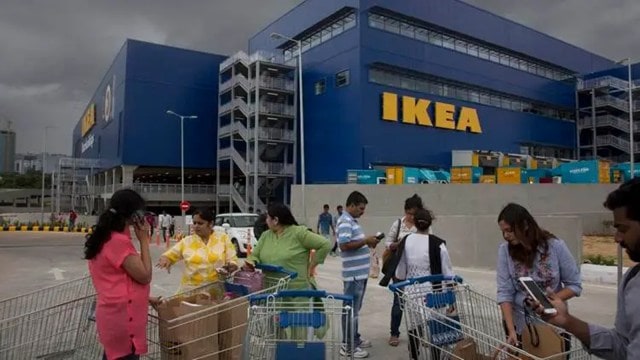In addition to its core home furnishings business, Swedish retail giant IKEA’s culinary offerings have emerged as a key ingredient to its growth in India, with food sales doubling their share of total revenue in the last three years.
Unlike other markets, India stands out for the significant contribution of food to revenue generation, with IKEA’s crowd-pulling offerings attracting 20-30 per cent more patrons to dine-in rather than shop for home decor. By maintaining affordability and further adapting to hyperlocal food preferences, the company again aims to double its food revenue share in the coming years.

Six years after its debut in Hyderabad, IKEA has expanded its offline presence to Bengaluru, Mumbai, and Navi Mumbai, with two more stores coming up in Delhi-NCR.
Story continues below this ad
In the three years since the Covid pandemic, IKEA India’s food business has doubled its contribution to overall revenue, now accounting for 8-10 per cent, Ankit Ghai, the company’s Country Food Manager, told The Indian Express.
In comparison, the share of food sales in IKEA’s global revenue was just 5 per cent in 2019, according to Statista. In 2022-23, IKEA India’s sales surged by 61 per cent to Rs 1,768 crore.
In India, food has emerged as a significant draw for both new and returning customers, particularly in centrally located stores – a stark contrast to other markets where IKEA outlets are often on the city outskirts, and food sales typically complement furniture purchases. In India, though, at least 20-30 per cent more customers are choosing to dine-in rather than shop for home decor.
Despite its food business gaining significant traction, IKEA does not plan to open standalone restaurants, Ghai said.
Story continues below this ad
Affordability is a key draw at IKEA’s restaurants, with over 60 menu items priced under Rs 100. Recent additions are priced with this strategy in mind – for example, the iconic hot dog launched last Thursday costs just Rs 49 for the vegetarian version and Rs 79 for chicken. By offering lower prices while maintaining its Scandinavian appeal, IKEA is positioning itself as a trendy alternative to both formal and informal dining spots. At the moment, the company is also developing a “one-two-three” model – Rs 10 ice cream, Rs 20 chai, and Rs 30 filter coffee.
Still, the Scandinavian appeal has its limits. When IKEA launched its first 1000-seater restaurant housed inside its Hyderabad store, their biryani was outselling the iconic Swedish meatballs. Even today, demand for Scandinavian and local offerings is equally split, Ghai said.
Numerous tweaks to the global menu have also been made – for example, instead of the classic cream sauce, IKEA offers curry sauce or Manchurian gravy. Regional dishes like vada pav in Mumbai, bisibele bhath in Bengaluru, and biryani in Hyderabad have become customer favourites.
Even within cities, menus are adapted to local preferences, with Worli and Navi Mumbai offering slightly different options. Moving forward, the company is developing seasonal and festive menus with global and Indian delicacies including golgappas and kebabs.

































